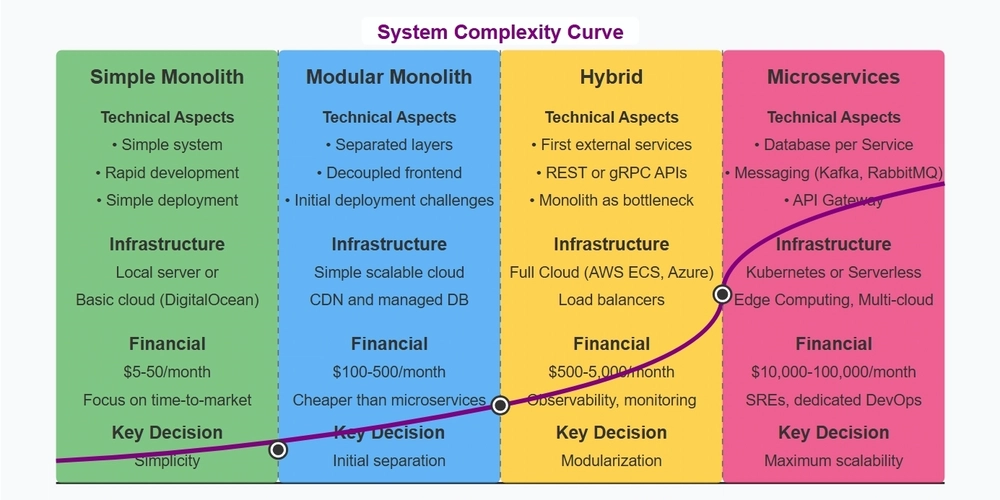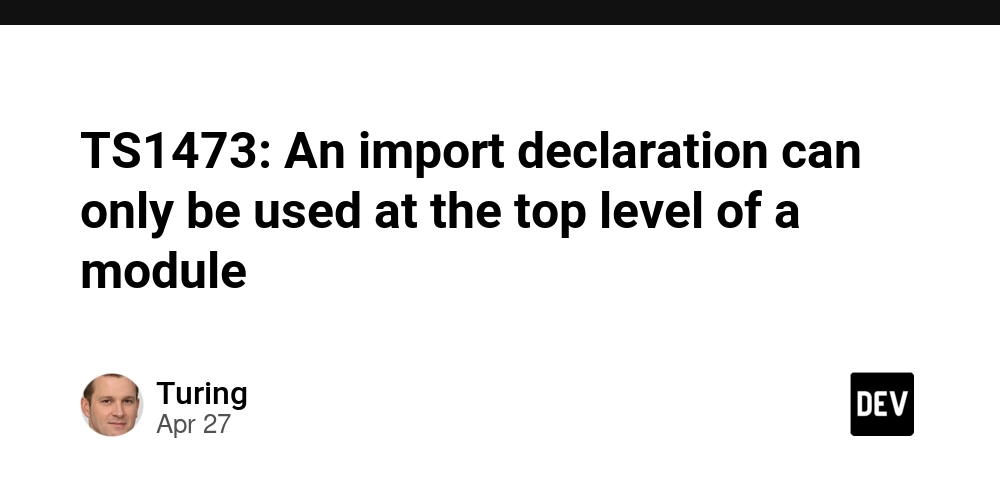Unlocking Transparency: The Role of Blockchain Audit Trails in Modern Security
Abstract Blockchain audit trails have emerged as an essential tool in today’s digital security landscape. By leveraging blockchain technology’s inherent decentralized and immutable qualities, these audit trails enable enhanced transparency, regulatory compliance, and cost efficiency. In this post, we explore the basics of blockchain technology, the critical role of audit trails, and how they are applied to modern industries – from finance and healthcare to supply chain management and beyond. We will also outline associated challenges, potential future innovations, and provide practical examples, tables, and bullet lists to break down this complex topic. For more detailed insight, see the original article. Introduction Blockchain technology is no longer confined to cryptocurrencies like Bitcoin. Its potential extends to various sectors by providing a secure and immutable ledger framework. Among these applications, blockchain audit trails play a central role in modern security. Audit trails are digital records that track data changes, and when implemented on a blockchain, they guarantee immutability, transparency, and trust. This post not only revisits the ideas introduced in the original article, but also incorporates additional insights on regulatory compliance, scalability issues, and promising future trends. This blog post is designed for both technical experts and novices alike. We explain key concepts in plain language while ensuring depth in our coverage of blockchain audit trails and how they secure modern ecosystems. Background and Context A Brief History of Blockchain Technology Blockchain technology evolved as a decentralized ledger to solve trust issues in digital transactions. Initially brought to prominence by Bitcoin, blockchain has matured into various implementations in finance, healthcare, supply chains, and more. Its design eliminates the need for centralized authorities by using cryptographic techniques to ensure data integrity – a vital feature for audit trails. For an in-depth explanation of how blockchain works, you can visit resources like What is Blockchain and IBM's Blockchain Overview. Defining Blockchain Audit Trails Blockchain audit trails refer to the sequence of records, stored in a non-reversible manner on a blockchain, that chronicle every transaction or data modification within a system. The key characteristics include: Immutability: Once data is recorded, it cannot be tampered with without consensus from network participants. Transparency: All participants have access to the same ledger, ensuring trust in multi-party environments. Decentralization: With no single point of control, the ledger is resilient against attacks and manipulations. These properties make blockchain audit trails invaluable across various domains that demand authenticity and reliability. Core Concepts and Features Understanding blockchain audit trails involves grasping several overlapping components. Below is a table that summarizes the key features and benefits: Feature Description Benefits Immutability Data entered cannot be modified or deleted. Deters fraud and data manipulation. Decentralization No central authority; records are maintained by a network of nodes. Eliminates single point of failure. Transparency All network participants can view the same records. Builds trust among stakeholders. Automated Verification Smart contracts facilitate automatic validation and settlement of transactions. Reduces manual oversight and speeds up processes. Regulatory Compliance Meets strict industry standards and regulations. Simplifies audit and compliance reporting. Cost Efficiency Reduces the need for intermediaries and extensive manual audits. Minimizes operational costs. Key Components Immutable Ledger: The backbone of audit trails that records each event without allowing alterations. Smart Contracts: Self-executing code that enforces verification processes and contractual terms automatically. For a more technical dive, review Smart Contracts on Blockchain. Decentralized Networks: These networks, such as those based on Blockchain principles, distribute data across nodes to minimize vulnerabilities. Legal and Regulatory Aspects: Blockchain audit trails often facilitate easier compliance with legal standards; for instance, many industries now turn to blockchain solutions for meeting regulatory requirements as discussed in Blockchain Regulation. Applications and Use Cases Blockchain audit trails are revolutionizing several industries by ensuring data integrity and operational security. The following are a few notable examples: Financial Services Financial institutions use blockchain audit trails to track the history of transactions. This transparency reduces the risk of fraud and streamlines regulatory compliance. For instance, banks can now have clearer insig

Abstract
Blockchain audit trails have emerged as an essential tool in today’s digital security landscape. By leveraging blockchain technology’s inherent decentralized and immutable qualities, these audit trails enable enhanced transparency, regulatory compliance, and cost efficiency. In this post, we explore the basics of blockchain technology, the critical role of audit trails, and how they are applied to modern industries – from finance and healthcare to supply chain management and beyond. We will also outline associated challenges, potential future innovations, and provide practical examples, tables, and bullet lists to break down this complex topic. For more detailed insight, see the original article.
Introduction
Blockchain technology is no longer confined to cryptocurrencies like Bitcoin. Its potential extends to various sectors by providing a secure and immutable ledger framework. Among these applications, blockchain audit trails play a central role in modern security. Audit trails are digital records that track data changes, and when implemented on a blockchain, they guarantee immutability, transparency, and trust. This post not only revisits the ideas introduced in the original article, but also incorporates additional insights on regulatory compliance, scalability issues, and promising future trends.
This blog post is designed for both technical experts and novices alike. We explain key concepts in plain language while ensuring depth in our coverage of blockchain audit trails and how they secure modern ecosystems.
Background and Context
A Brief History of Blockchain Technology
Blockchain technology evolved as a decentralized ledger to solve trust issues in digital transactions. Initially brought to prominence by Bitcoin, blockchain has matured into various implementations in finance, healthcare, supply chains, and more. Its design eliminates the need for centralized authorities by using cryptographic techniques to ensure data integrity – a vital feature for audit trails.
For an in-depth explanation of how blockchain works, you can visit resources like What is Blockchain and IBM's Blockchain Overview.
Defining Blockchain Audit Trails
Blockchain audit trails refer to the sequence of records, stored in a non-reversible manner on a blockchain, that chronicle every transaction or data modification within a system. The key characteristics include:
- Immutability: Once data is recorded, it cannot be tampered with without consensus from network participants.
- Transparency: All participants have access to the same ledger, ensuring trust in multi-party environments.
- Decentralization: With no single point of control, the ledger is resilient against attacks and manipulations.
These properties make blockchain audit trails invaluable across various domains that demand authenticity and reliability.
Core Concepts and Features
Understanding blockchain audit trails involves grasping several overlapping components. Below is a table that summarizes the key features and benefits:
| Feature | Description | Benefits |
|---|---|---|
| Immutability | Data entered cannot be modified or deleted. | Deters fraud and data manipulation. |
| Decentralization | No central authority; records are maintained by a network of nodes. | Eliminates single point of failure. |
| Transparency | All network participants can view the same records. | Builds trust among stakeholders. |
| Automated Verification | Smart contracts facilitate automatic validation and settlement of transactions. | Reduces manual oversight and speeds up processes. |
| Regulatory Compliance | Meets strict industry standards and regulations. | Simplifies audit and compliance reporting. |
| Cost Efficiency | Reduces the need for intermediaries and extensive manual audits. | Minimizes operational costs. |
Key Components
- Immutable Ledger: The backbone of audit trails that records each event without allowing alterations.
- Smart Contracts: Self-executing code that enforces verification processes and contractual terms automatically. For a more technical dive, review Smart Contracts on Blockchain.
- Decentralized Networks: These networks, such as those based on Blockchain principles, distribute data across nodes to minimize vulnerabilities.
- Legal and Regulatory Aspects: Blockchain audit trails often facilitate easier compliance with legal standards; for instance, many industries now turn to blockchain solutions for meeting regulatory requirements as discussed in Blockchain Regulation.
Applications and Use Cases
Blockchain audit trails are revolutionizing several industries by ensuring data integrity and operational security. The following are a few notable examples:
Financial Services
Financial institutions use blockchain audit trails to track the history of transactions. This transparency reduces the risk of fraud and streamlines regulatory compliance. For instance, banks can now have clearer insights into asset transfer patterns and ensure faster dispute resolution.
Healthcare
In healthcare, audit trails help secure patient data and manage healthcare records. By employing blockchain, healthcare providers ensure that patient records are immutable, accessible only to authorized personnel, and transparent during audits. This integrity is essential for meeting legal and compliance requirements.
Supply Chain Management
Modern supply chains are becoming more complex and global. Blockchain audit trails allow organizations like Walmart to trace products from raw materials to final delivery. Learn more about practical implementations with Walmart's Blockchain for Supply Chain Transparency. Key benefits include:
- Real-time tracing of products.
- Verification of authenticity of goods.
- Faster recall processes in the event of quality issues.
Voting Systems and Public Records
A blockchain audit trail can secure voting systems and public records by ensuring that every vote or transaction is recorded immutably. This enhances both security and public trust in democratic institutions.
Energy Sector
In the energy sector, blockchain audit trails facilitate energy trading and help in managing distributed energy resources. They ensure that energy transactions are recorded accurately and in compliance with regulations.
Challenges and Limitations
Despite the potential, several barriers hamper the widespread adoption of blockchain audit trails. It is essential to analyze these challenges to gauge the path forward.
Scalability Issues
One of the fundamental limitations faced by blockchain systems is scalability. As more transactions are recorded, the ledger grows, potentially slowing down operations and increasing costs. Efforts such as Blockchain Scalability Solutions are underway to address these challenges through innovations in data sharding, consensus algorithms, and off-chain processing.
Interoperability
Integrating new blockchain systems with legacy IT infrastructure can be complex. Seamless interaction between traditional systems and blockchain networks requires standardization and robust interoperability solutions.
Regulatory Uncertainty
Even as blockchain simplifies compliance with existing regulations, the regulatory framework surrounding blockchain technology is still evolving. Navigating the legal landscape is challenging, as seen with discussions around Blockchain Regulation. Additionally, emerging blockchain projects (for instance, those related to Arbitrum) face growing regulatory scrutiny:
Data Privacy
While transparency is a benefit, it can also present challenges. Balancing the need for open audit trails with personal or sensitive data privacy is critical. Implementing privacy layer solutions and selective data sharing protocols can help mitigate these concerns.
Future Outlook and Innovations
The role of blockchain audit trails is expected to expand as technology and regulatory frameworks mature. Here are some emerging trends and innovations that can shape the future.
Enhancements in Smart Contract Technology
Future advancements in smart contracts will further automate dispute resolution and verification processes. Improvements could lead to greater integration of blockchain audit trails in applications that require real-time updates and complex multi-party interactions.
Focus on Interoperability
With the drive for enhanced interoperability, blockchain platforms are being developed to work seamlessly with existing financial systems and legacy infrastructures. Improved cross-chain communication protocols will lower barriers for adoption and extend the usability of audit trails.
Integration of IoT Devices
As the Internet of Things (IoT) proliferates, integrating IoT data with blockchain audit trails will offer real-time monitoring of assets and conditions. This convergence is poised to offer unparalleled transparency in industries like logistics, healthcare, and smart cities.
Regulatory Advancements
Future regulatory clarity can propel blockchain adoption further. As governments update policies to harness blockchain benefits, industries will see increased trust and investment in these technologies. Tools that support compliance, auditing, and data sovereignty will become an integral part of regulatory frameworks.
Ecosystem Upgrades and Network Resilience
Technological progress is also boosting blockchain network performance. Initiatives such as Arbitrum and Network Upgrades help mitigate issues of latency and transaction fees. These upgrades are crucial in making blockchain solutions scalable and practical for real-world applications.
Key Benefits of Blockchain Audit Trails (Bullet List)
Here is a concise bullet list summarizing the key properties and benefits:
- Immutable Records: Prevent unauthorized changes, enhancing trust.
- Transparency: Provides a clear, publicly verifiable transaction history.
- Automated Processes: Use of smart contracts to reduce manual efforts.
- Regulatory Compliance: Simplifies audits and ensures standards are met.
- Cost Efficiency: Reduces the need for intermediaries and manual audits.
- Enhanced Security: Decentralized storage minimizes hacking and data breaches.
Case Studies and Dev.to Insights
Key industry examples and community insights highlight how blockchain audit trails are becoming indispensable. For instance:
- Financial Innovation: In Bank of America's Blockchain Patent Innovations, experts illustrate how blockchain is transforming traditional banking security and operational models.
- Sustainable Business Models: Sustainable Funding for Open Source: A Path to Stability and Innovation discusses how blockchain technology underpins funding strategies that promote long-term stability and innovation in open-source projects.
These insights reinforce that the potential applications of blockchain audit trails extend beyond mere data storage—they reshape the way industries approach security, compliance, and operational efficiency.
Summary
Blockchain audit trails are set to play a transformative role in modern security. They enable organizations across industries to maintain immutable records, ensure transparency, streamline automated verification, and adhere to regulatory requirements. Although challenges like scalability, interoperability, and evolving regulations remain, ongoing technological advancements and improved network protocols – such as those being developed on platforms like Arbitrum – promise a resilient future for blockchain audit trails.
In this post, we explored:
- Background and Context: The evolution of blockchain technology and the fundamental principles of audit trails.
- Core Concepts: Detailed features such as decentralization, smart contracts, and immutability.
- Applications: Practical examples across finance, healthcare, supply chain, and public recordkeeping.
- Challenges: Issues like scalability, interoperability, regulatory uncertainty, and data privacy need addressing.
- Future Outlook: Innovations in smart contracts, interoperability, IoT integration, and regulatory advancements all point toward a brighter future.
For further reading and additional technical details, consider exploring our curated resources:
- What is Blockchain
- Smart Contracts on Blockchain
- Walmart's Blockchain for Supply Chain Transparency
- Blockchain Scalability Solutions
- Blockchain Regulation
- IBM's What is Blockchain
- Arbitrum and Regulatory Compliance
- Arbitrum and Smart Contract Audits
- Arbitrum and Network Upgrades
Additionally, insights from the developer community on Dev.to enrich our understanding:
- Bank of America's Blockchain Patent Innovations
- Sustainable Funding for Open Source: A Path to Stability and Innovation
These resources provide further context and practical insights into how blockchain audit trails are reshaping modern security frameworks.
Conclusion
Blockchain audit trails encapsulate the power of decentralization, immutability, and transparency which are crucial in today’s security-centric landscape. They foster a robust environment where transactions can be securely recorded and verified without the need for intermediary oversight. Despite existing challenges—such as scalability and regulatory nuances—the future for blockchain audit trails is promising with ongoing innovations and integration of new technologies like IoT and advanced smart contracts.
As industries continue to evolve, adopting blockchain audit trails will not only safeguard data integrity but will also pave the way for more efficient, transparent, and cost-effective systems. This significant leap forward in digital security resonates across sectors, driving both compliance and innovation.
By understanding and leveraging these tools, businesses and governments alike can secure better trust, accountability, and transparency in operations. The journey towards exploiting the full potential of blockchain audit trails is dynamic, but one thing is clear: in the modern digital age, transparency is key, and blockchain is unlocking that transparency one block at a time.
Embrace the future of security with blockchain audit trails, and witness a revolution in transparency and trust.









































































